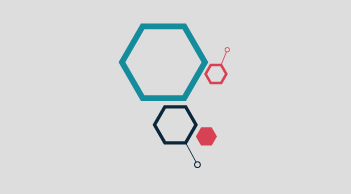-
TrendsHealthcare
-
SectorHealthcare and Pharmaceutical Industry
-
CountriesBrazil
My son Anthony was diagnosed with Hunter syndrome or mucopolysaccharidosis type II (MPS II) at the age of three. For many parents, having a child diagnosed with a rare disease can be despairing; after all, around 30% of affected children die before the age of five. At that time, I sought alternatives so that Anthony wouldn’t become part of that statistic. Some time later, I found myself on a flight to Japan in search of a therapy to change my son’s life, my own, and consequently, to transform the reality of the rare disease community in Brazil.
February 29th was chosen to represent Rare Disease Day precisely because of its uniqueness in occurring only in leap years, like in 2024. This year, we have one extra day to fight for the right to life for a contingent of 350 million people worldwide, according to estimates from Orphanet, a global platform dedicated to rare diseases and updated by a network of academic establishments from 40 countries.
In Brazil, an estimated 13 million people live with rare diseases. Collectively, they are not rare. That is to say, their existence cannot be neglected. They are children, young adults, and adults whose lives are limited by a health condition, but each of them has their own life journey and dreams just like everyone else. They are not invisible, and they cannot be treated as such.
When I say “estimated,” it’s not just a turn of phrase. One of the major challenges we face in Brazil is underreporting and delayed diagnosis. From the onset of symptoms to disease identification, individuals go through numerous healthcare professionals in an epic journey lasting from seven to ten years of investigation.
This is due to a series of factors, such as lack of societal awareness about rare diseases, difficulty accessing specialist doctors, treating comorbidities instead of the underlying cause, and even the unawareness of approximately 7,000 rare diseases by a large portion of healthcare professionals. Out of the 740,000 we have in the country today, fewer than 1,000 can interpret a genetic test.
Like so many rare parents who tirelessly fight for their children’s survival, I came to understand the intricacies of the integrated healthcare system and politics in Brazil, seeking to provoke, sensitize, and mobilize people. Until 2017, the Unified Health System (SUS) only provided one therapy for rare disease treatment. Today, there are over 15 approved medications, in addition to various processes under discussion in the National Committee for Health Technology Incorporation (Conitec), through public consultations, allowing contributions from civil society.
When I look at Anthony, now 14 years old, I reflect on how our journey here is marked by achievements. We have evolved by creating evidence-based processes to support our advocacy efforts with healthcare managers and professionals, representatives from legislative, executive, and judicial powers, members of regulatory agencies and professional associations, pharmaceutical industry, and of course, society.
However, the benefits gained so far are not entirely secure. Although Ordinance No. 199 of 2014, which established the National Policy for Comprehensive Care for People with Rare Diseases, represents a significant advancement, it is a fragile document. Our purpose is to work within an ecosystem where these actors can translate good intentions into public policies that understand the real needs of the rare community and advance towards concrete and lasting actions nationwide, promoting health equity regardless of the current government. The right to life cannot be something ethereal, as stated in the Brazilian Constitution, as time is crucial for people with rare diseases, who cannot depend on political goodwill.
The work for the rare disease community is grounded in data, facts, and unfortunately, in the loss of lives. Therefore, it is imperative to increase awareness about the diseases, all the issues involved, and specifically, the journeys of individuals. This is how we can strengthen our efforts by demanding access to information, transparency in public management, and consequently, as a stakeholder, help define how resources should be used.
It was only through this that we became aware of the unacceptable disposal of expired vaccines and medications. This fact only highlights that what the Brazilian Unified Health System (Sistema Único de Saúde – SUS) lacks is not resources to fund therapies, but rather commitment to planning and managing public funds. They tie the judicialization of high-cost treatments to the impact on the public budget, but the problem lies in poor management.
I firmly believe that by investing in improving communication processes and raising awareness about rare diseases, we can promote significant changes. This fight is not limited to people living with rare diseases but has a direct impact on the future of healthcare treatments in Brazil as a whole. By viewing rare diseases as an investment in the health of the population, we can drive progress and usher in a new era based on precision medicine.
By Antoine Daher
Founder of Casa Hunter and President of the Brazilian Federation of Rare Diseases Associations (Febrararas)



